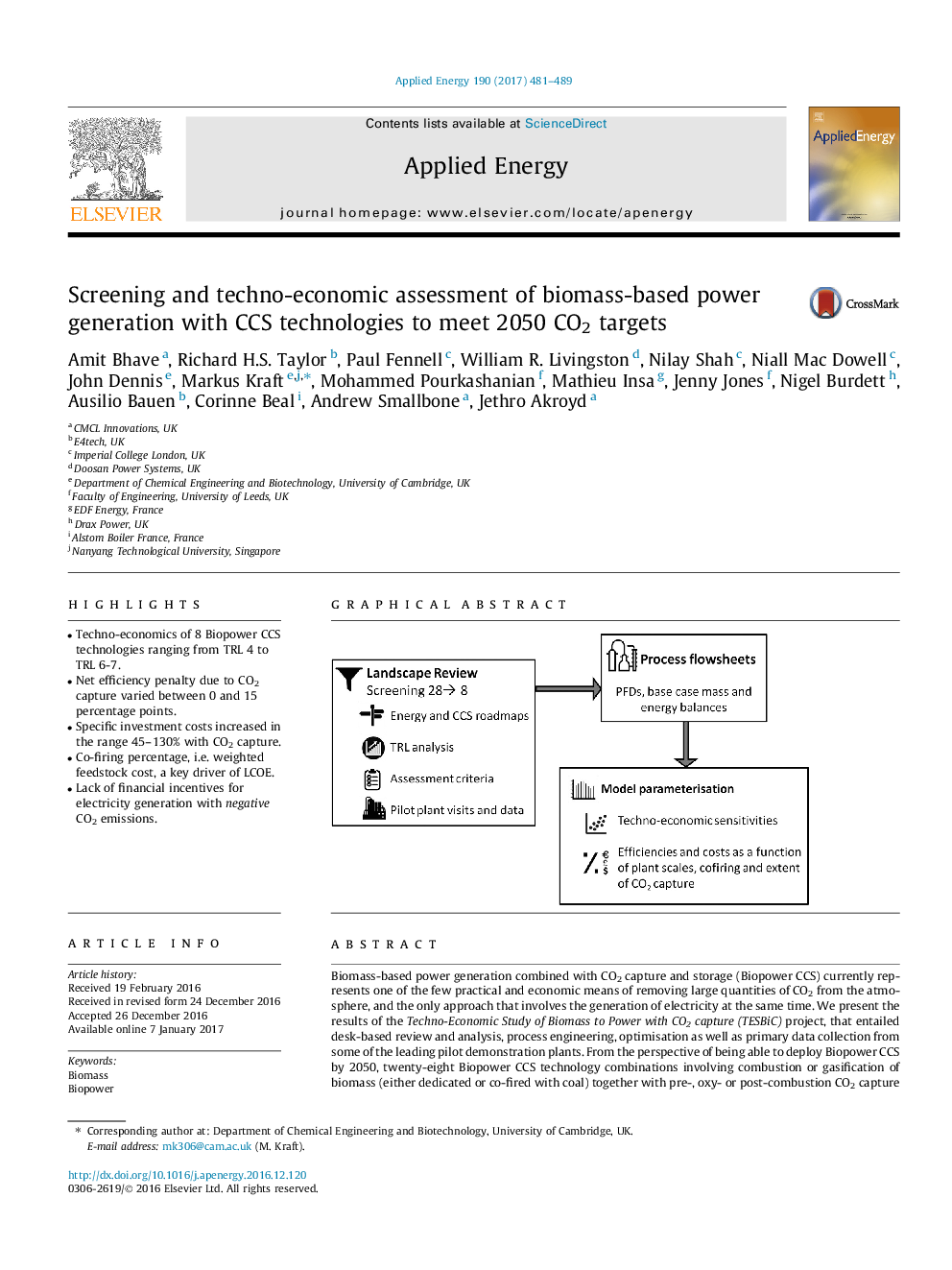| کد مقاله | کد نشریه | سال انتشار | مقاله انگلیسی | نسخه تمام متن |
|---|---|---|---|---|
| 6478535 | 1428100 | 2017 | 9 صفحه PDF | دانلود رایگان |

- Techno-economics of 8 Biopower CCS technologies ranging from TRL 4 to TRL 6-7.
- Net efficiency penalty due to CO2 capture varied between 0 and 15 percentage points.
- Specific investment costs increased in the range 45-130% with CO2 capture.
- Co-firing percentage, i.e. weighted feedstock cost, a key driver of LCOE.
- Lack of financial incentives for electricity generation with negative CO2 emissions.
Biomass-based power generation combined with CO2 capture and storage (Biopower CCS) currently represents one of the few practical and economic means of removing large quantities of CO2 from the atmosphere, and the only approach that involves the generation of electricity at the same time. We present the results of the Techno-Economic Study of Biomass to Power with CO2capture (TESBiC) project, that entailed desk-based review and analysis, process engineering, optimisation as well as primary data collection from some of the leading pilot demonstration plants. From the perspective of being able to deploy Biopower CCS by 2050, twenty-eight Biopower CCS technology combinations involving combustion or gasification of biomass (either dedicated or co-fired with coal) together with pre-, oxy- or post-combustion CO2 capture were identified and assessed. In addition to the capital and operating costs, techno-economic characteristics such as electrical efficiencies (LHV% basis), Levelised Cost of Electricity (LCOE), costs of CO2 captured and CO2 avoided were modelled over time assuming technology improvements from today to 2050. Many of the Biopower CCS technologies gave relatively similar techno-economic results when analysed at the same scale, with the plant scale (MWe) observed to be the principal driver of CAPEX (£/MWe) and the cofiring % (i.e. the weighted feedstock cost) a key driver of LCOE. The data collected during the TESBiC project also highlighted the lack of financial incentives for generation of electricity with negative CO2 emissions.
136
Journal: Applied Energy - Volume 190, 15 March 2017, Pages 481-489